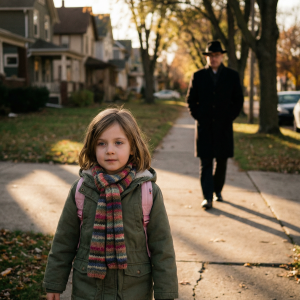Rice serves as the foundation for countless meals across cultures worldwide, and most home cooks prepare generous portions that inevitably result in leftovers sitting in the refrigerator. While transforming yesterday’s rice into today’s meal seems perfectly logical, many people wonder whether this common practice poses any health concerns.
The straightforward answer is that leftover rice can absolutely be consumed safely—but only when you follow specific handling and storage protocols. Food safety specialists warn that careless treatment of cooked rice can create serious health hazards, potentially leading to uncomfortable and even dangerous foodborne illnesses.
Let’s examine what culinary experts and food scientists recommend for keeping your leftover rice both delicious and safe to eat.
Understanding the Hidden Danger in Your Rice Bowl
The main concern surrounding leftover rice involves a sneaky bacterial culprit called Bacillus cereus. This resilient microorganism naturally exists in raw rice grains and possesses the remarkable ability to survive standard cooking temperatures that would eliminate most other pathogens.
When cooked rice sits at room temperature for extended periods, these surviving bacteria seize the opportunity to multiply exponentially, producing harmful toxins in the process. These bacterial toxins can trigger what’s commonly known as “fried rice syndrome”—a form of food poisoning characterized by unpleasant symptoms.
Victims typically experience stomach cramps, nausea, vomiting, and diarrhea beginning anywhere from one to six hours after consuming contaminated rice. This rapid onset makes the connection between symptoms and the offending meal quite obvious, though the discomfort can be significant.
Professional Guidelines for Proper Rice Storage
Immediate Refrigeration Protocol
Time becomes your most critical factor when dealing with freshly cooked rice. Food safety experts emphasize that cooked rice must be cooled down and transferred to refrigeration within sixty minutes of cooking completion. Every minute rice remains at room temperature provides additional opportunity for bacterial multiplication.
To accelerate the cooling process, transfer your rice into shallow, wide containers rather than deep bowls. This technique increases surface area exposure, allowing heat to dissipate more rapidly. Once cooled, store your rice in the refrigerator at temperatures below 40°F (4°C), and plan to consume it within twenty-four hours for optimal safety.
Thorough Reheating Requirements
When you’re ready to enjoy your stored rice, proper reheating becomes absolutely crucial. The rice must reach an internal temperature of at least 165°F (74°C) throughout—hot enough to produce visible steam rising from the surface.
Whether using a microwave, stovetop, or oven, ensure even heating by stirring the rice several times during the process. Cold pockets within the rice can harbor surviving bacteria, so uniform heating eliminates this risk. Lukewarm reheating simply won’t provide the temperature threshold needed to neutralize potential pathogens.
The One-Time Rule
Resist the temptation to repeatedly reheat the same batch of rice. Each cooling and reheating cycle creates additional opportunities for bacterial growth and toxin production. Moreover, multiple heating cycles progressively degrade the rice’s texture, flavor, and nutritional integrity.
Food scientists recommend reheating leftover rice exactly once, consuming the entire reheated portion immediately rather than storing it again for future meals.
Visual and Sensory Inspection
Before reheating any stored rice, conduct a thorough inspection using your senses as detection tools. Fresh rice maintains a neutral aroma and normal texture, while spoiled rice reveals itself through several telltale signs.
Watch for any off-putting odors, particularly sour or fermented smells that suggest bacterial activity. Examine the texture—healthy rice feels dry and separate, while compromised rice may appear slimy or sticky beyond its normal consistency. Any unusual discoloration or visible mold growth signals immediate disposal is necessary.
Strategies for Minimizing Leftover Rice Issues
The most effective approach to rice safety involves preventing excessive leftovers in the first place. Consider measuring rice portions more precisely to match your household’s actual consumption needs. Most people tend to prepare more rice than necessary, creating unnecessary storage challenges.
When planning meals, calculate approximately one-half cup of uncooked rice per person for side dishes, or three-quarters cup per person when rice serves as the main component. These measurements help minimize waste while ensuring everyone gets adequate portions.
For families who prefer batch cooking, consider dividing large rice preparations into meal-sized portions immediately after cooking, storing each portion separately for single-use convenience.
Nutritional Perspective on Leftover Rice
Properly stored and reheated rice retains most of its original nutritional value, including its carbohydrate content, B vitamins, and mineral composition. However, excessive heat exposure through multiple reheating cycles can diminish some water-soluble vitamins and alter the rice’s texture significantly.
Interestingly, some research suggests that cooling and reheating rice may actually increase its resistant starch content—a type of fiber that provides digestive health benefits. This potential nutritional boost offers another reason to feel confident about consuming properly handled leftover rice.
To maximize the nutritional value of any rice meal, combine your grains with colorful vegetables, lean proteins, and healthy fats. This combination creates a more complete nutritional profile while making your meal more satisfying and flavorful.
Making Smart Decisions About Rice Leftovers
Successfully managing leftover rice requires balancing convenience with safety considerations. When you follow established food safety protocols—prompt refrigeration, thorough reheating, and single-use reheating—leftover rice becomes a practical and safe meal component.
However, when in doubt about storage time, temperature exposure, or rice quality, the safest approach involves discarding questionable rice rather than risking foodborne illness. The relatively low cost of rice makes this precautionary waste preferable to potential health consequences.
By implementing these expert-recommended practices into your kitchen routine, you can confidently transform yesterday’s rice into today’s delicious meals without compromising your family’s health or safety. Smart food handling transforms leftovers from potential hazards into convenient meal solutions.





